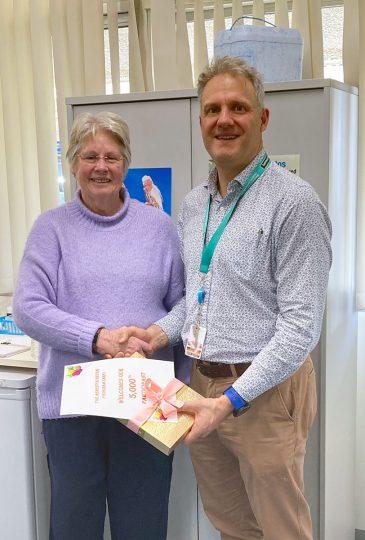Charlie’s asbestos lung-screening program gives hope

A Western Australian life-saving Asbestos Review Program (ARP), based at Sir Charles Gairdner Hospital, whose early detection of the deadly asbestos lung cancer – mesothelioma is giving hope to many across the state, has just screened its 5,000th patient.
Sandra Topperwien, 73, was diagnosed with pleural plaque on the lungs after a bout of pneumonia.
“I was exposed to asbestos at a mine site in the Northern Territory in the 1990s where I worked as a cleaner,” said Mrs Topperwien.
“I also used to wash my husband’s overalls when he was in the navy, which would be covered in blobs of cement-based asbestos. Not knowing the dangers at the time, I also used to play with it as a kid.
“Fortunately, at this stage, I don’t have mesothelioma but it can take years to develop. So, I’m grateful I can have annual check-ups at a state-of-the-art lung-screening facility right on my doorstep. It’s a preventative measure which gives me peace of mind.”
Mesothelioma affects the mesothelial tissue surrounding the lungs. The aggressive cancer can develop decades after asbestos exposure.
Professor Fraser Brims from the Institute for Respiratory Health said the ARP based at Sir Charles Gairdner hospital, is open to anyone who has had more than three months asbestos exposure, or x-ray changes from asbestos.
“Not only have we helped 5,000 patients since the program commenced in 1991, we’ve performed more than 29,000 chest x-rays, 11,500 CT scans, 45,000 blood tests and 49,000 lung function tests,” said Professor Brims.
“We’ve also pioneered modern technology with ultra-low dose CT scans to detect lung cancer, mesothelioma and scarring of the lung tissue (asbestosis) at an early stage. This means we can treat patients with the disease early and help to save lives.”
Sandra said she was proud to be part of the life-changing program and the 5000th patient, “The team are screening patients early but they’re also gathering data and learning more about this deadly disease, which will help other patients in the future. One day I hope they find a cure.”